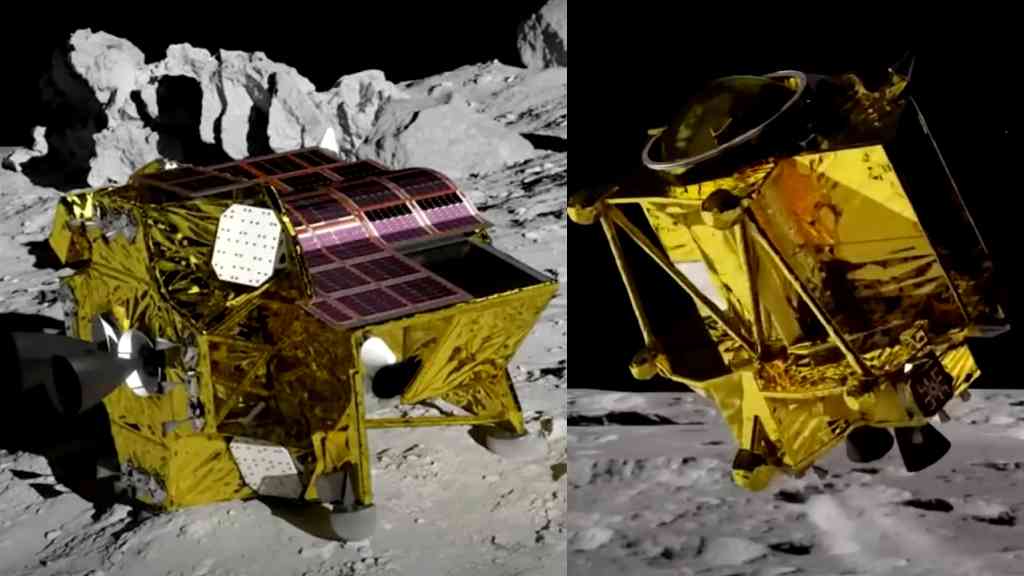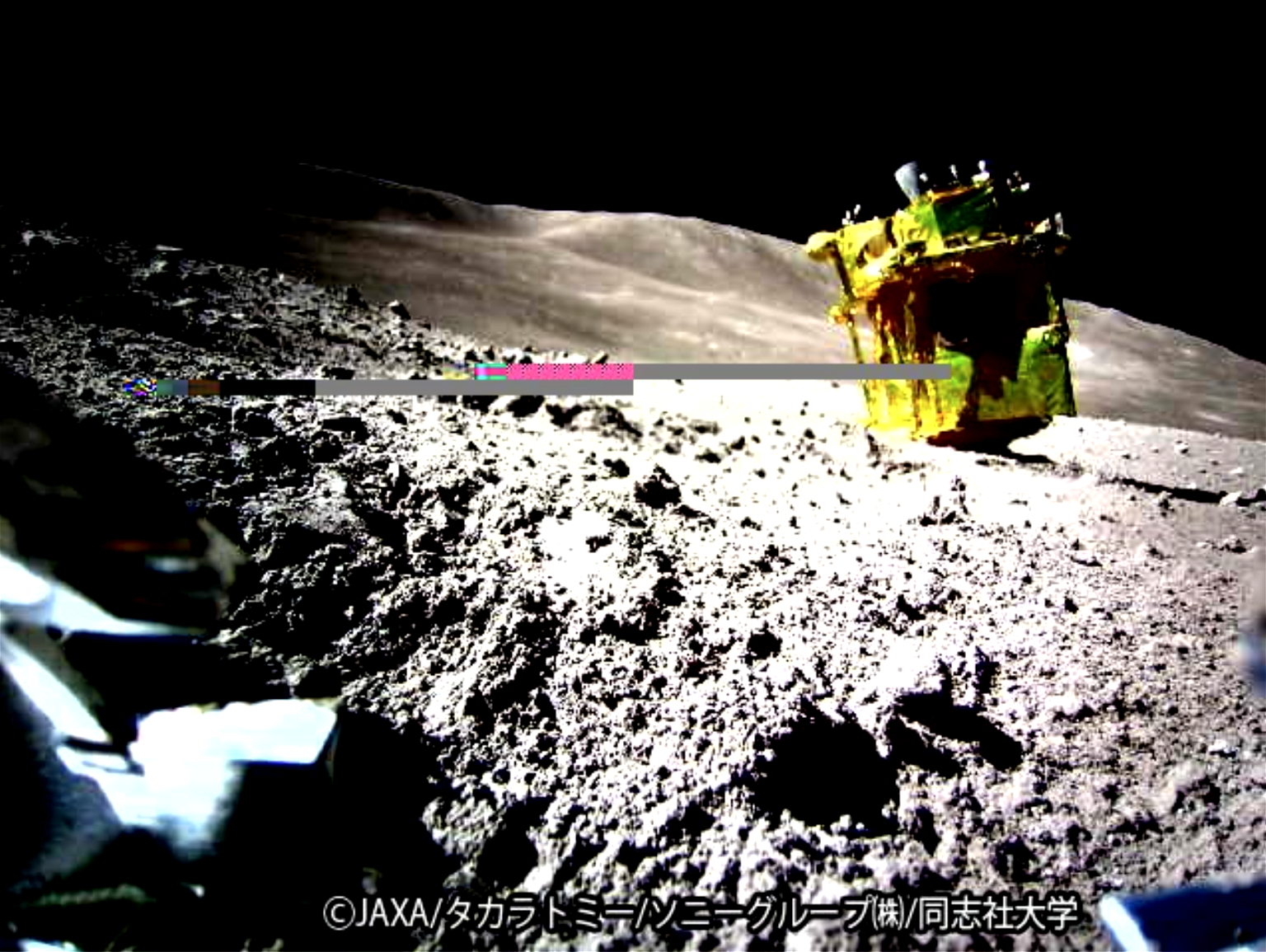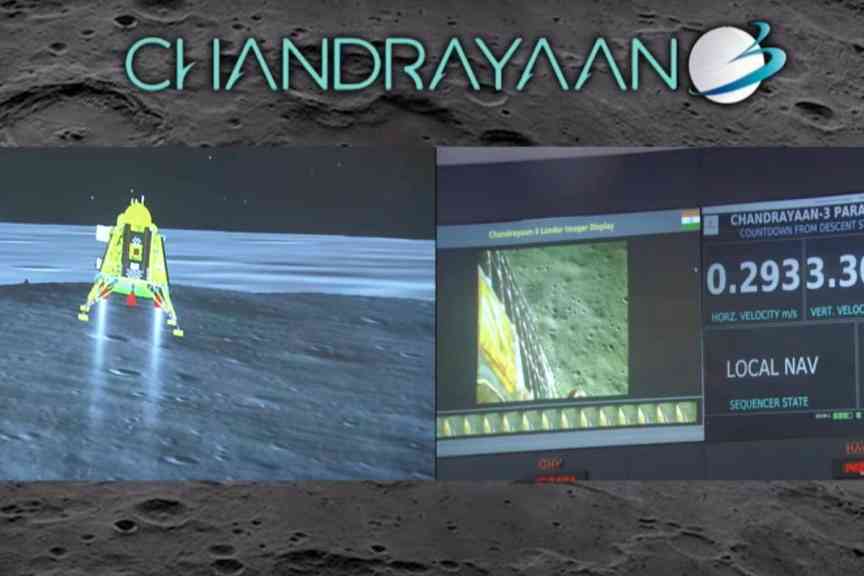Image reveals Japan’s historic SLIM spacecraft landed upside down on the moon


An image of Japan’s historic Smart Lander for Investigating Moon (SLIM) spacecraft, which successfully reached the moon last week, revealed that it landed on its head.
About the image: The photo released by the Japan Aerospace Exploration Agency (JAXA) shows SLIM upside down on the lunar surface, as captured by the robot LEV-2 (Lunar Exploration Vehicle-2), also known as SORA-Q, one of two tiny rovers carried by SLIM. Despite landing on its nose, the photograph confirms that SLIM successfully made it to the moon’s surface.
“I am very happy that the LEV-2 SORA-Q was able to make a major contribution to the mission of pinpoint landing of the small lunar landing demonstrator SLIM. With this, SORA-Q became the first Japanese robot to land on the moon and take pictures. This success is thanks to everyone involved and everyone who supported us as we pursued our dreams together,” Kintaro Toyama, chairman and representative director of Takara Tomy Company, said in a statement.

The touchdown: During its touchdown, SLIM handlers could not immediately confirm its status and later discovered that its solar panels were not generating electricity. The recent photo confirms that SLIM is unable to harvest sunlight as intended due to the way it landed.
A possible recovery: However, the successful deployment and operation of the daughter craft, LEV-2 and LEV-1, on the moon indicate a partial mission success. The team is currently working towards a possible recovery at least until Feb. 1.
About SLIM: SLIM, which was launched last September, reached the lunar orbit on Christmas Day before descending on the lunar surface on Jan. 19. This mission made Japan only the fifth nation ever to land a spacecraft on the moon.
The project is aimed at researching pinpoint landing technology for future lunar probes and testing it on the moon’s surface with a small-scale probe. It aims to enable precise landings on resource-scarce planets, allowing for targeted exploration in solar system research probes.
“This year marks the 10th year since the Space Exploration Innovation Hub collaborated with companies from all over Japan and began research and development aimed at the moon. Many new lunar surface exploration technologies unique to Japan are being developed, and it is the beginning of a new lunar era, with expectations for Japan’s success following LEV-2,” said JAXA Space Exploration Innovation Hub Hub Director Kazuyuki Funaki.
Share this Article
Share this Article






